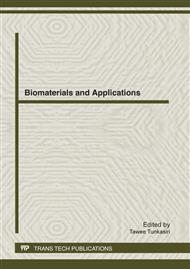p.485
p.489
p.493
p.497
p.501
p.505
p.509
p.513
p.517
Oral Bases Containing Centella asiatica Extract: Formulations and Evaluations
Abstract:
Centella asiatica (4% w/w) oral bases were formulated in order to treat ulcers, both in the oral cavity and topical area. Two types of bases, oleaginous and aqueous, were used. The oral bases were evaluated for their physical appearances, pH, viscosity, physical stability and adhesion. PEG and Carbopol based exhibited suitable properties. The viscosity and adhesion of some bases were enhanced by adding dry powder polymer. The amount of asiaticoside, active ingredient, in the extract and in the formulations was analyzed by HPLC.
Info:
Periodical:
Pages:
501-504
Citation:
Online since:
April 2012
Price:
Сopyright:
© 2012 Trans Tech Publications Ltd. All Rights Reserved
Share:
Citation:


